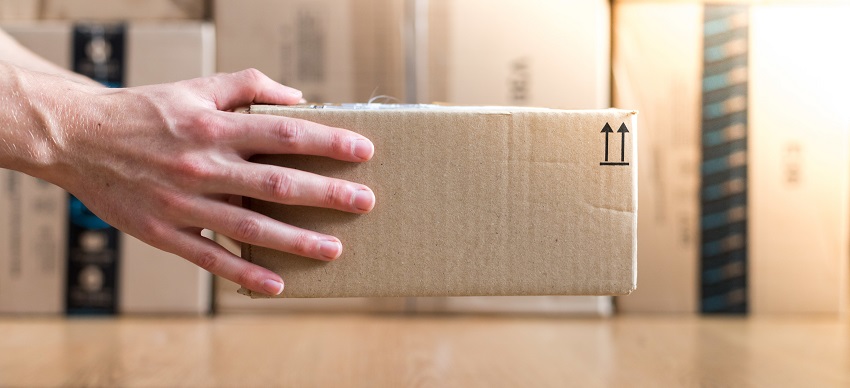The Business of Returns for Ecommerce Sellers
Ecommerce is booming and showing no signs of slowing down. But while products are selling online at an increasingly fast rate, a disproportionately larger number of ecommerce orders are coming back to retailers as returns.
There is more to the story. The correlation of higher returns with higher online sales is about more than just a greater volume of orders going out. The returns rate in traditional brick-and-mortar stores is under 10 percent, yet it is estimated to be as high as 30 percent for online purchases. This makes product returns an additional expense of selling online and means retailers have to make managing the reverse supply chain a priority.
Customers want returns to be as easy as possible and have even come to expect free shipping on most returns for online purchases. Many studies point out that consumers simply will not do business with an e-retailer that does not have a fair and simple return policy.
And with shipping costs rising yearly despite consumers’ expectations of “free” shipping, margins continue to get tighter for e-retailers.
Mitigating the Costs
Since returns are not going away and the cost of shipping is constantly in flux, retailers need to continually revisit ways to reduce this costly part of the online selling process. Investing in strategies that improve the reverse supply chain will increase margins. Here are four ideas.
Omnichannel Returns
Consumers want to be able to shop online and return in stores. In fact, 62 percent of shoppers are more likely to purchase online if they can return in-store. This policy can be a win-win for both the ecommerce retailer and the consumer, since it cuts down on return shipping costs and makes it convenient for the shopper to return the item. Not to mention that while in the store, the consumer might do some additional shopping.
Augmented Reality
Many times an item is returned because it looks or feels different than what’s expected. Since consumers cannot view the product in person when shopping online, there is a certain amount of guessing and trust that goes into a purchase. Better product information helps manage customer expectations by enabling them to make more informed choices.
One new idea to serve this purpose is augmented reality (AR). Many retailers are investing in this technology to give the consumer the ability to try products at home before buying. AR applications allow customers to see how products will look in their homes and compare products side by side in 3D.
Selling It Open Box
Many returns come back in less-than-perfect condition. Rather than put them in a landfill and write off the entire amount, some retailers, such as Best Buy, are finding that they can sell returned items as “open box.” There might be slight damage to the box or the product itself, so the price is reduced. The retailer benefits by salvaging some of the cost, and the consumer benefits by getting an adequate product at a lower price.
Cheaper Shipping Solutions
Returns do not have to make it back as quickly as they are delivered to customers. The USPS, UPS, and FedEx all offer cheaper shipping solutions for longer delivery timeframes that retailers should take advantage of. As long as products are handled efficiently once returned and shipping costs are minimized, the reverse logistics process is working. Many retailers offer immediate credit for returns or even don’t require an item be returned if its value is below a certain threshold — which all customers appreciate.
As the growth of online purchasing continues, returns will only become a larger and more costly issue for retailers. Managing the costs and process of returns is complex and demands creativity. At the same time, maintaining customer satisfaction through the returns process is key to customer loyalty. Smart retailers are taking steps to make returns a competitive advantage and no longer view the reverse logistics process simply as a cost of doing business.
Contact us at info@transportationimpact.com to learn more about ecommerce returns.

Posts by Tag
- October 2018 (8)
- August 2018 (6)
- August 2019 (6)
- February 2020 (6)
- March 2020 (6)
- May 2020 (6)
- December 2020 (6)
- April 2019 (5)
- May 2019 (5)
- July 2019 (5)
- October 2019 (5)
- April 2020 (5)
- July 2020 (5)
- September 2020 (5)
- October 2020 (5)
- July 2018 (4)
- September 2018 (4)
- January 2019 (4)
- February 2019 (4)
- March 2019 (4)
- June 2019 (4)
- September 2019 (4)
- December 2019 (4)
- January 2020 (4)
- June 2020 (4)
- August 2020 (4)
- April 2018 (3)
- June 2018 (3)
- November 2018 (3)
- December 2018 (3)
- November 2020 (3)
- January 2021 (3)
- March 2018 (2)
- November 2019 (2)
- February 2021 (1)
- May 2021 (1)
8921 Crew Drive
Emerald Isle, NC 28594
(252) 764-2885
info@transimpact.com
Get In Touch!
 FedEx and UPS Update: Spring 2019
The FedEx 7-Day Delivery Announcement: More Than Meets the Eye
FedEx and UPS Update: Spring 2019
The FedEx 7-Day Delivery Announcement: More Than Meets the Eye




